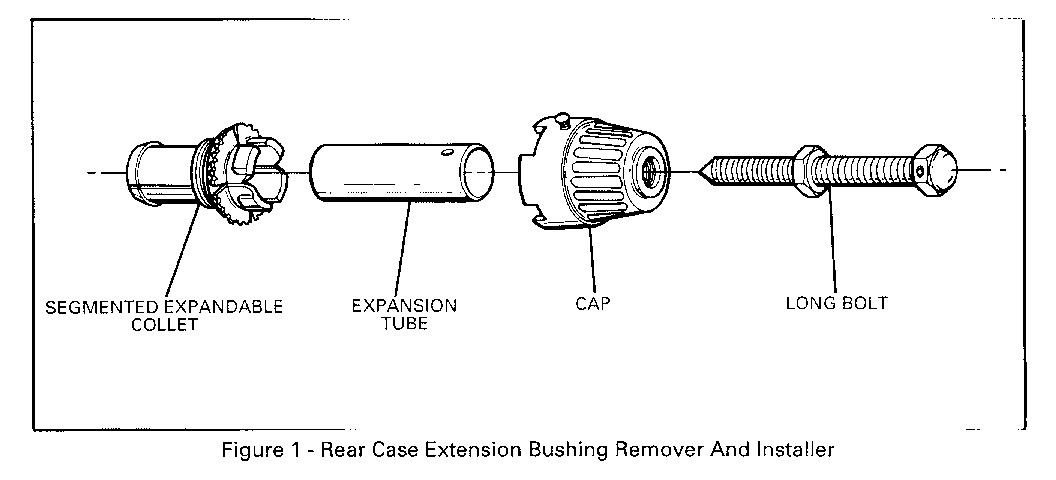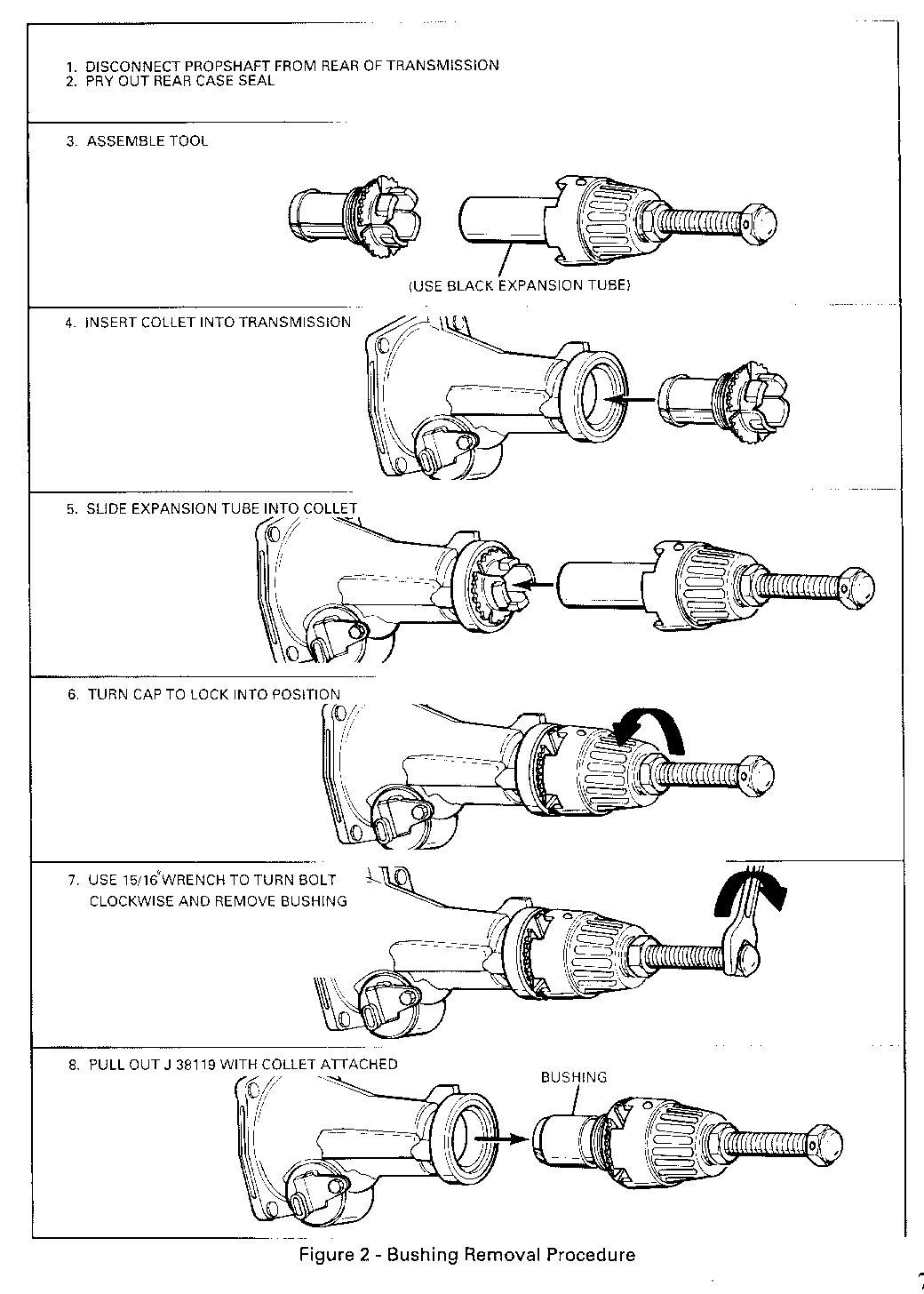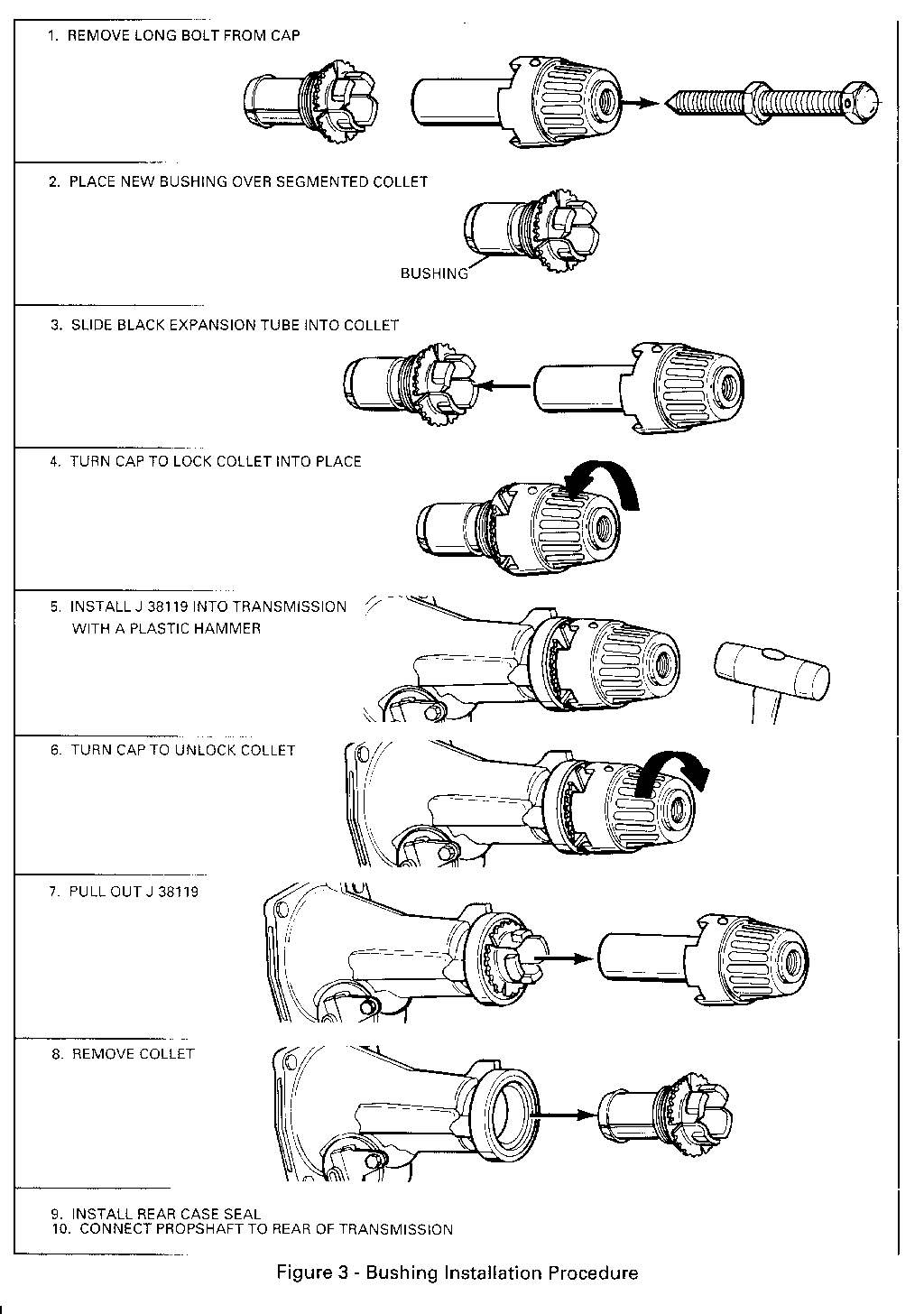NEW ON-VEHICLE SERV. PROCEDURE REMOVE REAR CASE OR EXT. BUSH

MODELS AFFECTED: ALL 1977 THROUGH 1990 MODELS EQUIPPED WITH THM2004R, THM200C AND THM200 TRANSMISSIONS
BULLETIN COVERS:
A new rear bushing (or rear extension bushing) removal/installation procedure that can be performed while the transmission is in the vehicle. This procedure saves labor time on each of the following transmission models:
THM 200-4R THM 200-C THM 200
Labor savings are different on each model but can be significant.
SERVICE PARTS INFORMATION:
This tool is currently available from Kent-Moore:
J 38119 - Rear Case Extension Bushing Remover and Installer
SERVICE PROCEDURE: (Figures 1, 2, 3) ------------------ IMPORTANT: J 38119 includes two expansion tubes - one silver and one black. Use the BLACK tube for GM transmissions.
Begin each procedure by raising vehicle on a hoist.
Bushing Removal Procedure: (Figure 2)
1. Disconnect propshaft from rear of transmission. 2. Remove rear case seal. 3. Assemble tool as shown in figure 2. 4. Insert collet into rear opening of transmission case. 5. Slide expansion tube into segmented collet. 6. Turn cap to lock collet into position. 7. Use a 15/16" end wrench and turn bolt clockwise to remove bushing. 8. Remove J 38119 with collet attached.
Bushing Installation Procedure: (Figure 3)
1. Remove long bolt from cap of J 38119.
2. Place new bushing over segmented collet.
3. Slide black expansion tube into segments.
4. Turn cap to lock collet into place.
5. Install new bushing into transmission by driving J38119 in firmly with a plastic hammer.
6. Turn cap to unlock collet.
7. Remove J 38119.
8. Remove collet.
9. Install rear case seal. 10. Connect propshaft to rear of transmission.
SERVICE MANUAL REFERENCE:
This procedure is not currently included in any Service Manual.



General Motors bulletins are intended for use by professional technicians, not a "do-it-yourselfer". They are written to inform those technicians of conditions that may occur on some vehicles, or to provide information that could assist in the proper service of a vehicle. Properly trained technicians have the equipment, tools, safety instructions and know-how to do a job properly and safely. If a condition is described, do not assume that the bulletin applies to your vehicle, or that your vehicle will have that condition. See a General Motors dealer servicing your brand of General Motors vehicle for information on whether your vehicle may benefit from the information.
